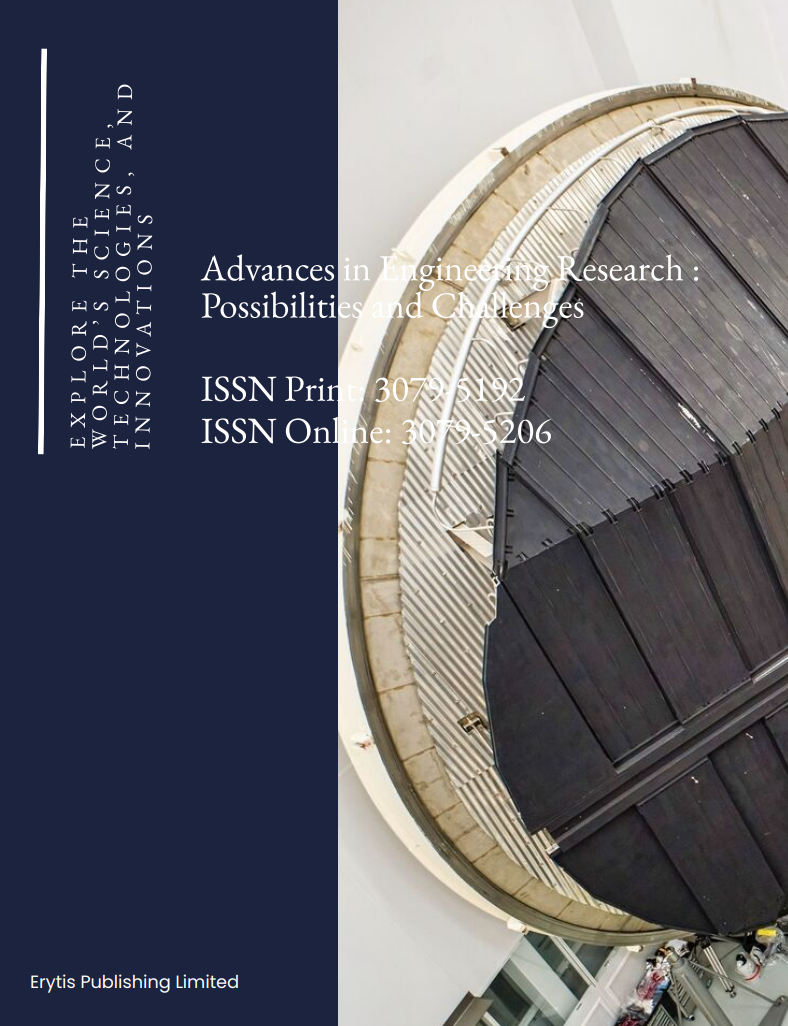Review on the Development of Lithium-Ion Batteries Electrolytes
DOI:
https://doi.org/10.63313/AERpc.2009Keywords:
Lithium-Ion Batteries, Electrolyte, Solid-State Electrolyte, High-Voltage, Flame-RetardantAbstract
This paper systematically reviews the technological evolution of Lithium-Ion Batteries battery (LIB) electrolytes, from traditional liquid systems to innova-tive solid/gel composite systems, with a focus on advances in high-voltage, wide-temperature-range, and flame-retardant electrolytes. By analyzing the synergistic optimization mechanisms of solvents, lithium salts, and additives, the study elucidates the critical role of electrolytes in determining battery en-ergy density, safety, and environmental adaptability. Integrating recent break-throughs in solid-state electrolytes (e.g., sulfide/oxide electrolytes) and green manufacturing trends, it outlines key challenges and future directions for elec-trolytes in pairing with advanced materials such as high-nickel cathodes and silicon-based anodes, providing theoretical support for next-generation LIB de-sign.
References
[1] B. Diouf, R. Pode. (2015). Potential of lithium-ion batteries in renewable energy. Renewa-ble Energy, 76, 375-380.
[2] J. Tang. (2024). Progress in the application of silicon-based anode nanotechnology in lith-ium batteries. E3S Web of Conferences, 553, 01007-01007.
[3] Y.K. Liu, C.Z. Zhao, J. Du, X.Q. Zhang, A.B. Chen, Q. Zhang. (2023). Research Progresses of Liquid Electrolytes in Lithium‐Ion Batteries. Small, 19, 2205315.
[4] T. Hou, G. Yang, N.N. Rajput, J. Self, S.-W. Park, J. Nanda, et al. (2019). The influence of FEC on the solvation structure and reduction reaction of LiPF6/EC electrolytes and its implica-tion for solid electrolyte interphase formation. Nano Energy, 64, 103881-103881.
[5] J. Yang, X. Shi, W. Wang, Z. Liu, C. Shen. (2023). Localized High-Concentration Electrolyte (LHCE) for Fast Charging Lithium-Ion Batteries. Batteries, 9, 155-155.
[6] B. Zhang, M. Metzger, S. Solchenbach, M. Payne, S. Meini, H.A. Gasteiger, et al. (2015). Role of 1, 3-Propane Sultone and Vinylene Carbonate in Solid Electrolyte Interface Formation and Gas Generation. The Journal of Physical Chemistry C, 119, 11337-11348.
[7] H. Ota, Y. Sakata, A. Inoue, S. Yamaguchi. (2004). Analysis of Vinylene Carbonate Derived SEI Layers on Graphite Anode. Journal of The Electrochemical Society, 151, A1659-A1659.
[8] G. Kang, G. Zhong, K. Cai, J. Ma, J. Biao, Y. Cao, et al. (2024). Dimethyl Sulfide Electrolyte Ad-ditive Enabled High-Voltage Lithium-Ion Battery. ACS Energy Letters, 9, 2572-2581.
[9] O. Ka, F. Cheng, L. Wen, X. Wang, T. Wang, X. Zeng, et al. (2024). Identifying lithium difluo-ro(oxalate)borate as a multifunctional electrolyte additive to enable high-voltage Li4Ti5O12 lithium-ion batteries. Journal of Materials Chemistry A, 12, 11487-11501.
[10] M.R. Shaik, Y. Park, Y.-K. Jung, W.B. Im. (2024). Interfacial modulation of bifunctional electrolyte additive engineering for dendrite-free and robust lithium metal anode. Journal of Energy Chemistry, 97, 120-127.
[11] K. Ozawa. (1994). Lithium-ion rechargeable batteries with LiCoO2 and carbon electrodes: the LiCoO2/C system. Solid State Ionics, 69, 212-221.
[12] H. Sun, S. Kang, L. Cui. (2023). Prospects of LLZO type solid electrolyte: From material de-sign to battery application. Chemical Engineering Journal, 454, 140375-140375.
[13] Z. Wan, D. Lei, W. Yang, C. Liu, K. Shi, X. Hao, et al. (2019). Low Resistance–Integrated All‐Solid‐State Battery Achieved by Li7La3Zr2O12 Nanowire Upgrading Polyethylene Oxide (PEO) Composite Electrolyte and PEO Cathode Binder. Advanced Functional Materials, 29.
[14] J. Zheng, Y. Qiu, S. Liao, Z. Yue, S. Fang, N. Zhou, et al. (2024). A Novel 4‐Fluorophenyl Isocyanate Additive Constructing Solid Cathodes‐Electrolyte Interface for High‐Performance Lithium‐Ion Batteries. Small, 20, 2405853.
[15] Z. Xie, J. He, Z. Xia, Q. Cai, Z. Tang, J. Cai, et al. (2023). Synergistic interphase modification with dual electrolyte additives to boost cycle stability of high nickel cathode for all-climate battery. Journal of Energy Chemistry, 86, 197-207.
[16] K. Xu, S. Zhang, J.L. Allen, T.R. Jow. (2002). Nonflammable Electrolytes for Li-Ion Batteries Based on a Fluorinated Phosphate. Journal of The Electrochemical Society, 149, A1079-A1079.
[17] L. Xia, Y. Xia, Z. Liu. (2015). A novel fluorocyclophosphazene as bifunctional additive for safer lithium-ion batteries. Journal of Power Sources, 278, 190-196.
[18] A.M. Haregewoin, A.S. Wotango, B.-J. Hwang. (2016). Electrolyte additives for lithium ion battery electrodes: progress and perspectives. Energy Environ. Sci., 9, 1955-1988.
Downloads
Published
Issue
Section
License
Copyright (c) 2025 by author(s) and Erytis Publishing Limited.

This work is licensed under a Creative Commons Attribution 4.0 International License.















